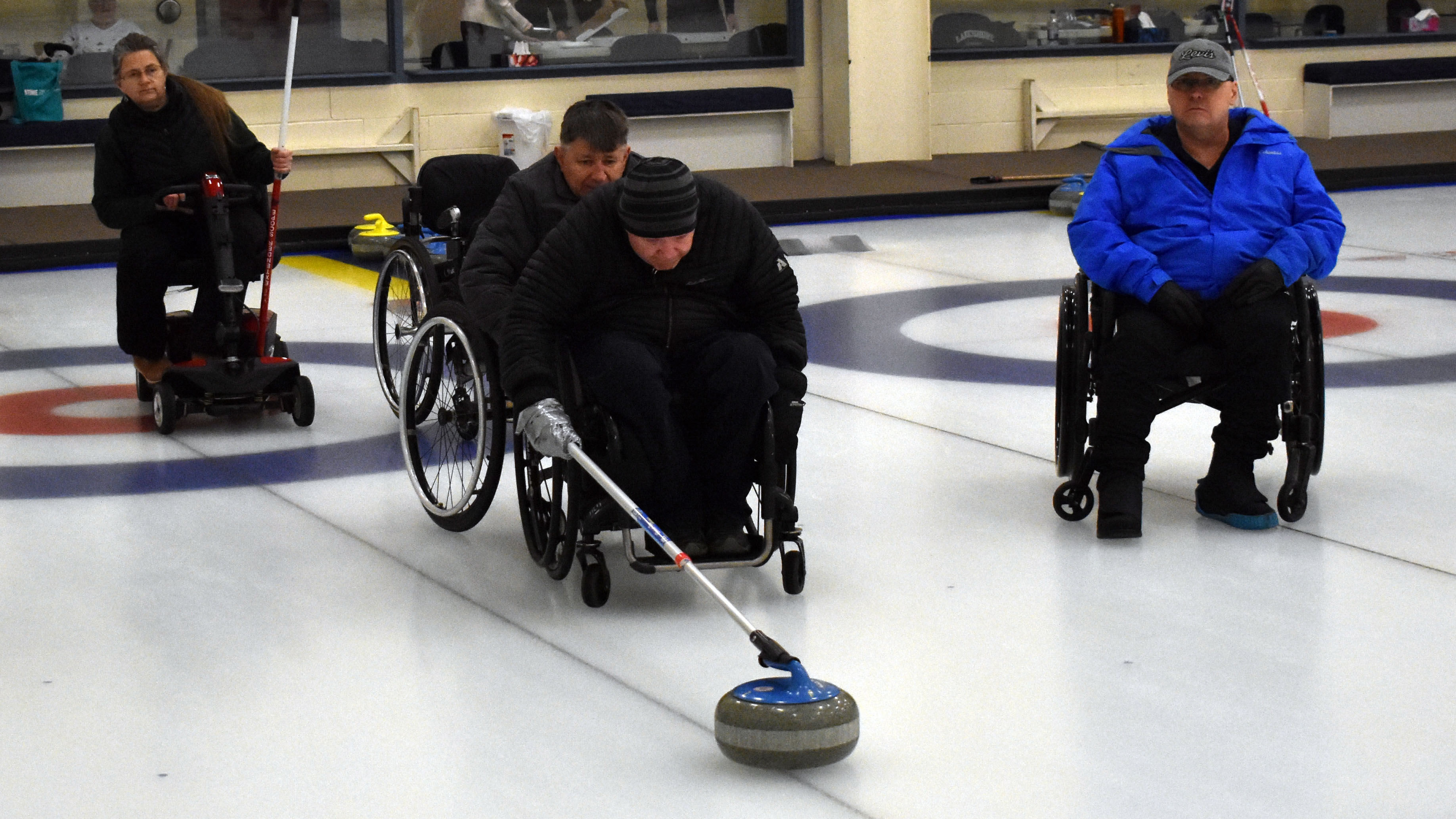Recreation
Rock and roll into wheelchair curling
No snow tires required

caption
Gordie Publicover about to push the stone.In a cold curling rink in the basement of the Sackville Sports Stadium, seven wheelchair curlers split off into two teams: boys vs. girls and blue stones vs. yellow stones.
Wheelchair curling has been a part of Lakeshore Curling Club for 18 years. This year, they partnered with the Halifax Regional Municipality to offer a non-competitive, recreational session on Saturday afternoons.
The program doesn’t require any curling experience.
“We definitely don’t keep it competitive. There is competitive wheelchair curling throughout Nova Scotia, but this is just recreational curling,” said organizer and player Laughie Rutt.
“Every game starts with a handshake and ends with a handshake.”
Rutt, who has been curling for 20 years, is the first wheelchair curler in Nova Scotia. There are several wheelchair accessible rinks in the province, said Rutt, but Lakeshore is the only one where they will coach you “right off the bat.”
How it works
Wheelchair curling is the same as regular curling, except there is no sweeping.
“It’s like playing shuffleboard on a cruise ship and delivering that piece to a target,” said Rutt. “You deliver the rock with the cue stick, or a delivery stick as we call it, and you deliver it to the house the same way. You put the same turn on it that a regular curler would by turning your wrist.”
Rutt and fellow curler Rose Pearle act as helpers for the other players. They make sure players are lined up and that sticks are hooked into the stones.
Players aren’t disqualified if they can’t do something. Instead modifications are made based on what they can do.
The delivery stick is held by most players in their right hand and can be duct taped to their glove if they can’t grip it. From there they push the stone. Before pushing it, they must put their wheelchair breaks on, and have a team member hold the back of their chair to ensure they don’t slide.
Other modifications include a metal bar, referred to as the “the holy shit stick,” which can be hooked to a chair for extra support when taking a shot.
The club charges $30 for six weeks of curling, a fraction of competitive curling rates.
Weekly sessions are two hours long and curlers are coached by in-house club member Stewart Slauenwhite.
Equipment is provided or donated by the curling club, the HRM or Sport Nova Scotia.
Social fun
For the players who come out week after week, it’s about challenging themselves and having some laughs, said Rutt. There is friendly conversation followed by encouragement, even when someone doesn’t make the best shot.
“When you start seeing yourself get better, you get proud of yourself and you want to keep going,” said Rutt. “And then you have some fun.”
Most players haven’t met before, he said, so getting out and meeting people with similar interests makes it even better.
“The major thing about curling for me is the social interest, and then the mutual understanding of the challenges that need to be met,” said Wade Myra, a curler who first wheeled onto the ice last year.
“So it’s very therapeutic and encouraging to get out, as well there’s physical benefits.”
Myra said curling is also a way to shatter a stigma about the disabled community.
“Able-bodied society looks at us being inferior to them because all they can see is the disability; they don’t see the ability or capability of the person,” said Myra.
“For the able-bodied people who are here, they see us as capable of accomplishing what they’re doing.”
Rutt encourages anyone who is interested in wheelchair curling to come out and try it.
If you’re interested, contact Nova Scotia Wheelchair Curling

